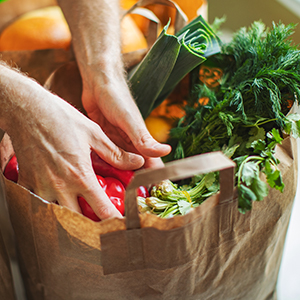3 easy ways to pack protein into your plant-based diet
There’s no question that a healthy eating plan should include plenty of protein. The trick is getting the right mix, including plant-based proteins.
While animal meats like steak and poultry — and even meatless meats — are common sources of protein, they also have plenty of saturated fats and sodium, which are much less healthy.
“What we find is that animal proteins are typically more likely to be associated with poor health outcomes than plant-based proteins,” says Columbus Batiste, MD, an interventional cardiologist and chief of cardiology at Kaiser Permanente’s Riverside and Moreno Valley Medical Centers in Southern California.
The good news is that there are plenty of whole, plant-based proteins without these health risks — that also include nutrients like fiber and antioxidants. Whether you’re exploring a vegetarian diet or just want to eat healthier, here are 3 tips to consider if you’re thinking about adding more plant-based protein to your diet.
Find out where you’re already getting protein
Before making any major changes to your diet, break down the nutritional value of your favorite meals. You may be surprised by how much protein you’re already getting from things like beans, vegetables, and even some fruits.
“They’re definitely available, and they’re all around you,” Dr. Batiste says of protein-rich foods. “Whether you’re talking about legumes, beans, seeds, grains, things like quinoa, brown rice, and amaranth, those foods are all rich in robust protein. You even have a fair amount of protein in your broccoli, kale, and cruciferous vegetables.”
Common plant-based protein sources include:
- High protein (7 to 20 grams of protein per serving): Almonds, black beans, pinto beans, lentils, peanuts, peanut butter, soybeans, split peas, tempeh, and tofu.
- Medium protein (2 to 6 grams of protein per serving): Artichokes, broccoli, brown rice, cauliflower, chard, coconut, dried figs, oatmeal, peas, spinach, sweet corn, sweet potato, and yams.
- Low protein (1 to 2 grams of protein per serving): Cantaloupe, mango, mushrooms, oranges, and potatoes.
“The key is finding enough plant-based proteins on your plate at every meal: breakfast, lunch, and dinner,” says Dr. Batiste. “If you choose to eat animal-rich proteins, they need to be small amounts.”
If you’re not sure whether you’re already getting enough protein, you can use a tool like the U.S. Department of Agriculture’s online nutrition calculator to find out how much you might need.
Focus on protein “packages”
If you do need more protein in your diet, or if you’re looking for healthier protein choices, think about the whole picture, not just a number.
“We focus too much on the protein or the fat, and that’s the wrong approach,” Dr. Batiste says. “We need to focus on food, and say, Is it healthful or not in general?” In other words, where you get your protein is just as important as how much.
For example, red and processed meats like sirloin steak and chicken thighs are high in protein, but they’re also high in saturated fat and sodium. Meanwhile, plant-based protein sources like beans and lentils have virtually no saturated fat or sodium, and they’re also rich in heart-healthy fiber. This is what the Harvard School of Public Health calls a better protein “package,” and it’s more likely to keep you healthy.
Always check the food labels on your nuts, beans, and other items to make sure they’re low in ingredients like sodium, saturated fat, and added sugar.
Try the bowl method
An easy way to start getting your plant-based protein at home is with the bowl method. It’s a quick, customizable approach to meals that Dr. Batiste uses at least once a day.
“I typically start off with choosing a whole grain like brown rice, some kind of legume, black beans, tofu, or tempeh,” he says, adding that things like rice noodles or potatoes work too. “I’ll add in my vegetables as well, and then some type of sauce or flavoring on top of it.”
Plus, it’s easy to keep the bowl method healthy. You can buy canned beans and rinse them off for a salt-free base, or frozen vegetables for easy prep. Sometimes Dr. Batiste will even use frozen rice, if he doesn’t feel like cooking. “We’ve made food challenging,” he says. But it doesn’t have to be.
Looking for more inspiration? Try one of these easy meat-free recipes:
- Spicy peanut veggie and grain bowl
- Shakshuka with chickpeas and lemon
- Roasted vegetables and heirloom tomato pasta
Remember, balance is the key to a healthy diet, so make sure that you’re still combining your protein with other major nutrients, like healthy fats and complex carbs. And before making any major changes to your diet, be sure to check in with your personal doctor.







